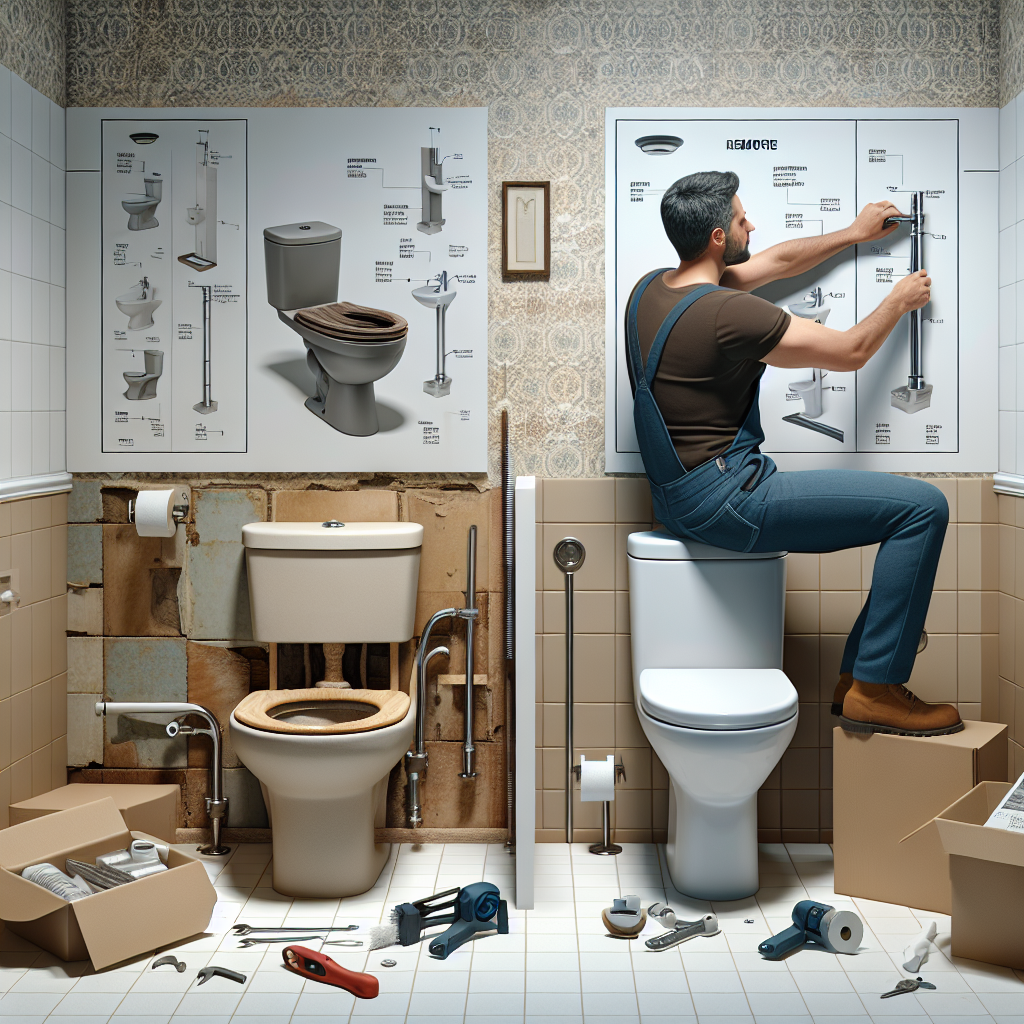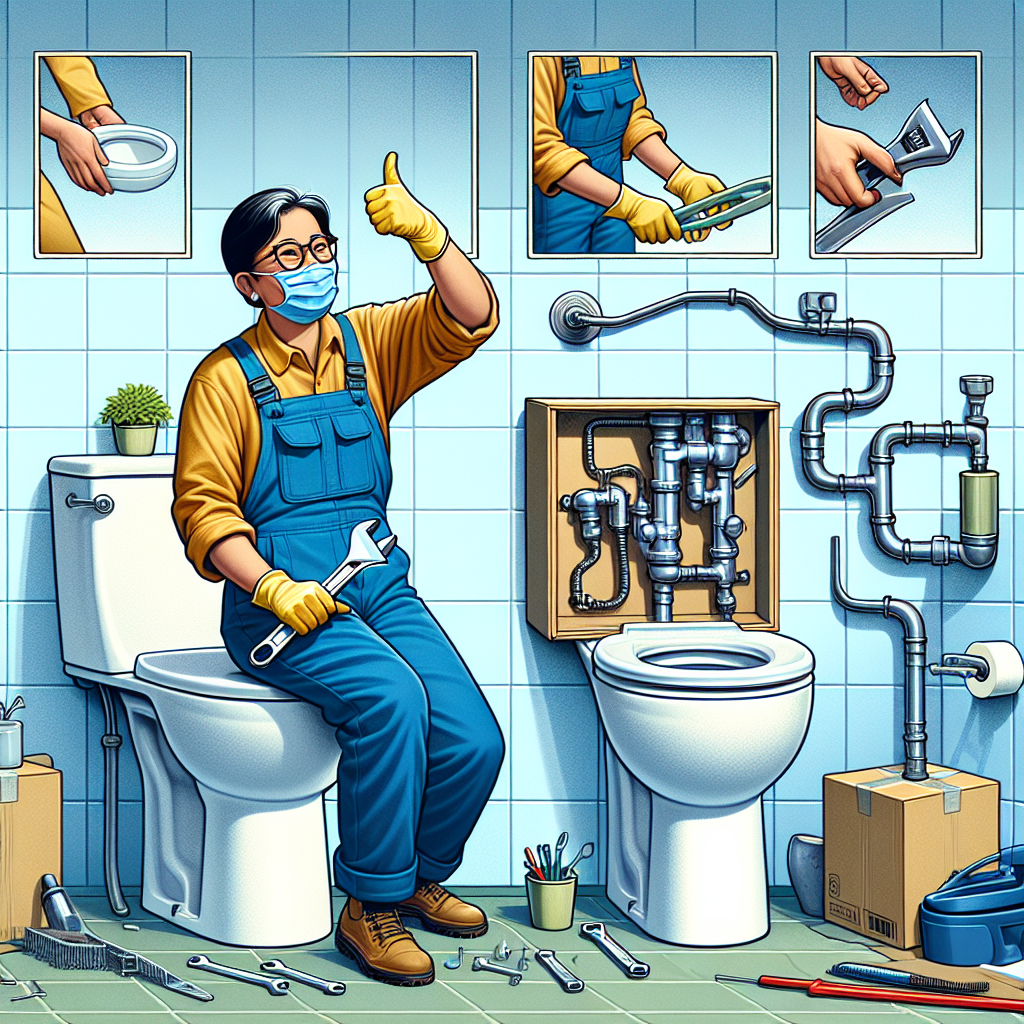Toilet Upgrade and Installation: A Comprehensive Guide

When it comes to home improvement projects, upgrading and installing a new toilet may not be the most glamorous task, but it is undoubtedly an essential one. A well-functioning and efficient toilet not only enhances the overall aesthetics of your bathroom but also contributes to water conservation and reduces utility bills. Whether you are looking to replace an old, inefficient toilet or simply upgrade to a more modern and comfortable model, this guide will provide you with valuable insights and step-by-step instructions to ensure a successful toilet upgrade and installation.
Benefits of Upgrading and Installing a New Toilet
Before diving into the details of the installation process, let’s first explore the numerous benefits of upgrading and installing a new toilet:
- Improved Water Efficiency: Older toilets can use up to 6 gallons of water per flush, while newer models are designed to use as little as 1.28 gallons per flush. By upgrading to a water-efficient toilet, you can significantly reduce your water consumption and contribute to water conservation efforts.
- Cost Savings: With water-efficient toilets, you can save money on your monthly water bills. Over time, the savings can add up, making the investment in a new toilet financially beneficial.
- Enhanced Comfort: Modern toilets come with various features such as soft-close lids, heated seats, and bidet functions, providing a more comfortable and luxurious bathroom experience.
- Improved Hygiene: Bidet functions, commonly found in newer toilets, offer superior cleanliness and hygiene compared to traditional toilet paper. This can be particularly beneficial for individuals with certain health conditions.
- Increased Property Value: Upgrading your bathroom fixtures, including the toilet, can increase the value of your property. Potential buyers often look for updated and energy-efficient features when considering a home purchase.
Choosing the Right Toilet
Before starting the installation process, it is crucial to select the right toilet for your needs. Here are some factors to consider when choosing a new toilet:
1. Water Efficiency
Look for toilets that are labeled as “WaterSense” certified. These toilets meet the Environmental Protection Agency’s (EPA) criteria for water efficiency and use significantly less water per flush compared to older models. Water-efficient toilets typically use 1.28 gallons per flush or less, without compromising performance.
2. Bowl Shape and Size
Toilets come in various bowl shapes, including elongated and round. Elongated bowls provide more comfort and are suitable for larger bathrooms, while round bowls are ideal for smaller spaces. Consider the size of your bathroom and choose a bowl shape that fits well within the available space.
3. Height
Standard toilets have a height of around 14-15 inches. However, for individuals with mobility issues or seniors, a comfort-height toilet with a height of 16-19 inches may be more suitable. These taller toilets make sitting down and standing up easier, reducing strain on the knees and back.
4. Flushing Mechanism
There are two main types of flushing mechanisms: gravity-fed and pressure-assisted. Gravity-fed toilets are the most common and rely on the force of gravity to flush waste. Pressure-assisted toilets use compressed air to provide a more powerful flush, making them ideal for commercial settings or households with frequent use.
5. Additional Features
Consider any additional features you may want in your new toilet, such as soft-close lids, bidet functions, or dual-flush options. These features can enhance comfort and convenience but may also increase the cost of the toilet.
Installation Process
Now that you have chosen the perfect toilet for your bathroom, it’s time to proceed with the installation process. While it is recommended to hire a professional plumber for complex installations, installing a toilet can be a DIY project for those with basic plumbing skills. Here is a step-by-step guide to help you through the process:
1. Gather the Necessary Tools and Materials
Before starting the installation, make sure you have the following tools and materials:
- Adjustable wrench
- Screwdriver
- Plumber’s putty or wax ring
- New toilet bolts
- Level
- Hacksaw (if needed)
- Tape measure
- Bucket or towels for water cleanup
2. Remove the Old Toilet
Start by turning off the water supply to the toilet. This is usually done by turning the shut-off valve located behind the toilet clockwise. Flush the toilet to drain the water from the tank and bowl. Use a sponge or towel to remove any remaining water from the bowl and tank.
Next, disconnect the water supply line from the bottom of the tank using an adjustable wrench. Loosen the nuts securing the toilet to the floor and remove them. Carefully lift the old toilet off the floor and place it on a towel or old newspapers to prevent any water or debris from spreading.
3. Prepare the Area for Installation
Inspect the flange, which is the pipe fitting on the floor where the toilet sits. Ensure that it is in good condition and securely attached to the floor. If the flange is damaged or not level with the floor, it may need to be replaced or repaired.
Remove the old wax ring or plumber’s putty from the flange and clean the area thoroughly. If the flange is below the floor level, you may need to use an extender ring to bring it up to the proper height.
4. Install the New Toilet
Place a new wax ring or plumber’s putty on the flange, ensuring it is centered and properly aligned. Carefully lower the new toilet bowl onto the wax ring, aligning the mounting bolts with the holes in the base of the toilet. Apply gentle pressure to compress the wax ring and create a watertight seal.
Once the toilet bowl is in place, secure it to the floor by tightening the nuts onto the mounting bolts. Be careful not to overtighten, as this can crack the toilet bowl. Use a level to ensure that the toilet is straight and adjust as necessary.
Attach the tank to the bowl according to the manufacturer’s instructions. Connect the water supply line to the fill valve on the bottom of the tank and tighten the nut with an adjustable wrench. Turn on the water supply and check for any leaks. If there are no leaks, flush the toilet to ensure proper functionality.
Frequently Asked Questions about “Toilet Upgrade and Installation”
1. How long does it take to install a new toilet?
The time required to install a new toilet can vary depending on the complexity of the installation and the individual’s plumbing skills. On average, a straightforward toilet installation can be completed within 1-2 hours.
2. Can I install a new toilet myself, or should I hire a professional?
Installing a new toilet can be a DIY project for those with basic plumbing skills. However, if you are unsure about any aspect of the installation or if you encounter any complications, it is recommended to hire a professional plumber to ensure a proper and leak-free installation.
3. How much does it cost to upgrade and install a new toilet?
The cost of upgrading and installing a new toilet can vary depending on factors such as the type of toilet, additional features, and the complexity of the installation. On average, homeowners can expect to spend between $200 and $800 for a new toilet, including installation.
4. Are water-efficient toilets worth the investment?
Yes, water-efficient toilets are worth the investment. While they may have a higher upfront cost compared to older models, the long-term savings on water bills can make up for the initial expense. Additionally, water-efficient toilets contribute to water conservation and are more environmentally friendly.
5. How often should I replace my toilet?
The lifespan of a toilet can vary depending on factors such as usage, maintenance, and the quality of the toilet. On average, a well-maintained toilet can last for 20-30 years. However, if your toilet is constantly experiencing issues, such as frequent clogs or leaks, it may be time to consider a replacement.
Summary
Upgrading and installing a new toilet can bring numerous benefits, including improved water efficiency, cost savings, enhanced comfort, and increased property value. When choosing a new toilet, consider factors such as water efficiency, bowl shape and size, height, flushing mechanism, and additional features. The installation process involves removing the old toilet, preparing the area, and installing the new toilet. While it can be a DIY project, it is advisable to hire a professional plumber for complex installations. By following this comprehensive guide, you can successfully upgrade and install a new toilet, transforming your bathroom into a more functional and efficient space.
For professional assistance with toilet upgrade and installation, contact North Bay Contractors.

